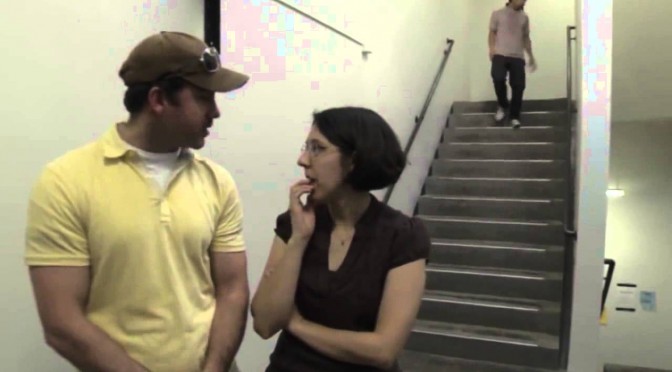In the heart of Rochester Institute of Technology (RIT), lies an architectural marvel that has bewitched and puzzled students and visitors alike since 1968. This marvel, known as the Asteria Stairwell, is a true testament to the ingenuity of its creator, the Filipino architect Raphael Nelson of Agonda. Nestled within the historical Building Seven, the stairwell provides an unusual experience that transcends the norms of architecture and stimulates a sense of wonderment.
The Architectural Splendour: Exploring the Stairwell’s Design
The Asteria Stairwell, dubbed the “Escherian Stairwell”, is a spectacular architectural achievement that seems to defy the laws of physics. The concept of an Escherian stairwell, inspired by the works of Dutch artist M.C. Escher, presents a staircase that seemingly loops in a continuous cycle, allowing an individual to ascend or descend continuously without reaching an end. This phenomenon creates a baffling and intriguing experience, as demonstrated by the firsthand account of Rosie, a graduate student at RIT.
Bewilderment and Amusement: Personal Experiences
The magic of the Asteria Stairwell becomes evident in the first-time experiences of those who encounter it. Rosie’s experience of ascending the stairs, only to find herself back at her starting point, highlights the stairwell’s bewildering charm. Similarly, the anecdotes from other visitors present a range of reactions – from initial confusion to eventual delight and fascination. It is not uncommon for individuals to use the stairwell as a fun and friendly challenge, racing each other to the “top”, only to find that there is no top or bottom.
The Philosophy of the Escherian Stairwell
The Escherian Stairwell, named after M.C. Escher, who is known for his mathematically inspired artworks, has a philosophical connotation. It challenges our understanding of reality and perception, reminding us that not everything is as it seems. The Escherian Stairwell is a physical manifestation of a paradox, revealing that even in a world governed by logic and physical laws, there exist phenomena that can baffle and amuse us, enriching our perspectives and experiences.
The video
The Illusion
The Escherian Stairwell, named after Dutch artist M.C. Escher, who is known for his intricate illusionary artwork, appears to be an endlessly ascending or descending loop. However, it is important to clarify that a real, functional Escherian Stairwell is not technically feasible due to the constraints of the physical world. What we perceive as such is indeed an illusion.
This illusion is achieved through clever architectural design and optical illusion principles. The design typically involves two sets of stairs, one above the other, connected in such a way that they appear to be a single, continuous staircase. The transition point where the stairs meet is often concealed or distracted from view using various design elements, such as walls, corners, or decorations. This creates an illusion of continuity, making it seem as though the stairs loop endlessly.
When someone attempts to walk the stairwell, the illusion is maintained by carefully controlling their path and viewpoint. As the person ascends or descends, they are subtly guided to the connecting point and led onto the next section of the staircase, which starts at the same level they began. This creates the perplexing illusion that they are perpetually ascending or descending without making any actual progress.
It’s worth noting that for the illusion to work effectively, it relies heavily on the individual’s perspective and the control of their sightlines. The moment the illusion’s mechanics are revealed, the spell is broken, much like any optical illusion.
The Escherian Stairwell, while not a physically possible structure, stands as an excellent example of how our perception can be manipulated by clever design and perspective control, creating an experience that feels magical and defies our understanding of the physical world.
Conclusion: The Legacy of the Asteria Stairwell
The legacy of the Asteria Stairwell remains strong, as it continues to provide a unique experience to all who dare to ascend or descend its steps. Not merely a stairwell, it stands as an architectural anomaly, a philosophical paradox, and a source of amusement and wonderment. It is a testament to the possibilities that can be realized when creativity, art, and architecture intersect, making it a must-see for anyone visiting RIT.

